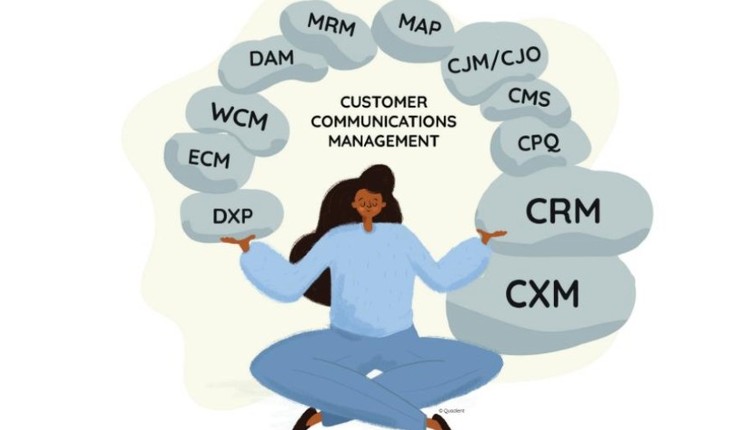
“Moments of truth are make-or-break instances along a customer’s journey that present a decision point,“ according to a new eBook, Moments that Matter: Critical Touchpoints that Make or Break The Customer Experience, written by customer experience consultant, Annette Franz, CCXP, and Quadient. Document professionals directly control trillions—yes, trillions—of critical touchpoints each year that affect these moments of truth. Sometimes, however, we get lost in our processes and think “inside out,” letting our processes, departmental structure and technology shape how we think about our customers and their experiences, rather than the other way around. Given today’s environment, customers aren’t going to let us get away with that for much longer.
Simply put, the expectations of customers are increasing at a rate that will not afford us the luxury of inside out thinking anymore. Their demands are entirely reasonable—they are the same demands you have for the companies with which you do business. Unfortunately, these increasing demands may be pushing our customer engagement systems to their breaking points.
In general, new prospects require more interactions across more touchpoints than ever before to convert into customers. Statistics show that 15 years ago, consumers, on average, used two touchpoints when making a purchase and only 7% regularly used more than four. Now, consumers use almost six touchpoints, with 50% regularly using more than four.
How can we make this easier?
Here are two suggestions:
Empathize with your customers
Today’s customers are less tolerant of the limitations of your systems. There was an exception where empathy switched during the first eight weeks of the COVID-19 lockdowns, as customers recognized the challenges of their vendors when they began working from home. Consumers gave businesses a free pass for a limited time because they had empathy for the situation and were most likely experiencing it themselves in some way. It’s time to return that favor.
As a consumer travels through their journey from prospect to loyal customer, they often are aware of the moment they are shifted to the responsibility of another silo. Within your business, technology silos and organizational silos create barriers that make it unclear who owns the communication. This lack of clarity can result in a loss of empathy that the customer experiences negatively. While this may be a problem you put up with, your customers have no patience for this lack of coordination. If they feel that you communicate inconsistently, your competitors have made it easier than ever to switch to their company by targeting the poor experiences you provide.
Support customers during moments of truth
As we look at inside out thinking, we think of the moments that conform to our processes. Customer conversion, marketing, onboarding and correspondence are normal moments for us, because we think about the processes that are part of our KPIs, team goals or company targets. But looking from the customer’s perspective, there are moments of truth in their lives that have nothing to do with your customer communication systems and processes. These moments can be made better if you pay attention, and it generally doesn’t cost anything to improve them for your customers.
For example, when a customer is having a baby, it is one of the most important moments of their lives. They are bombarded with communications on a variety of topics that are new to them. At that moment and as a child grows, there many moments of truth where relevant communications matter that have important consequences for the family’s providers of healthcare, financial services, insurance and utilities. Thinking of your services in terms of how the customer experiences them in the context of what is going on in their lives that requires you communicating with them can help you improve your communications sent to them.
If you incorporate omnichannel CCM, customer journey mapping and customer journey orchestration, you will have a better chance of success. How you support customers during their journey’s moments of truth is just as important as how you support them in their happier days of onboarding.
A deep understanding of the journey matters
The COVID-19 pandemic has taught us much about our customers. It has made abundantly clear the barriers we have internally as document pros, and we have seen some of the true costs of those barriers. Let’s improve the touchpoints we create by thinking about the people who are receiving them and the context in which they are experiencing them. As we look at the expenses that increase as a result of our silo-based systems, it is evident that we can deliver better experiences at lower cost with less frustration if we think about customers from the outside in, rather than inside out. Only then, can we re-imagine our communication portfolio as a series of journeys supported by well-crafted touchpoints that truly meet the needs of our precious customers.




















